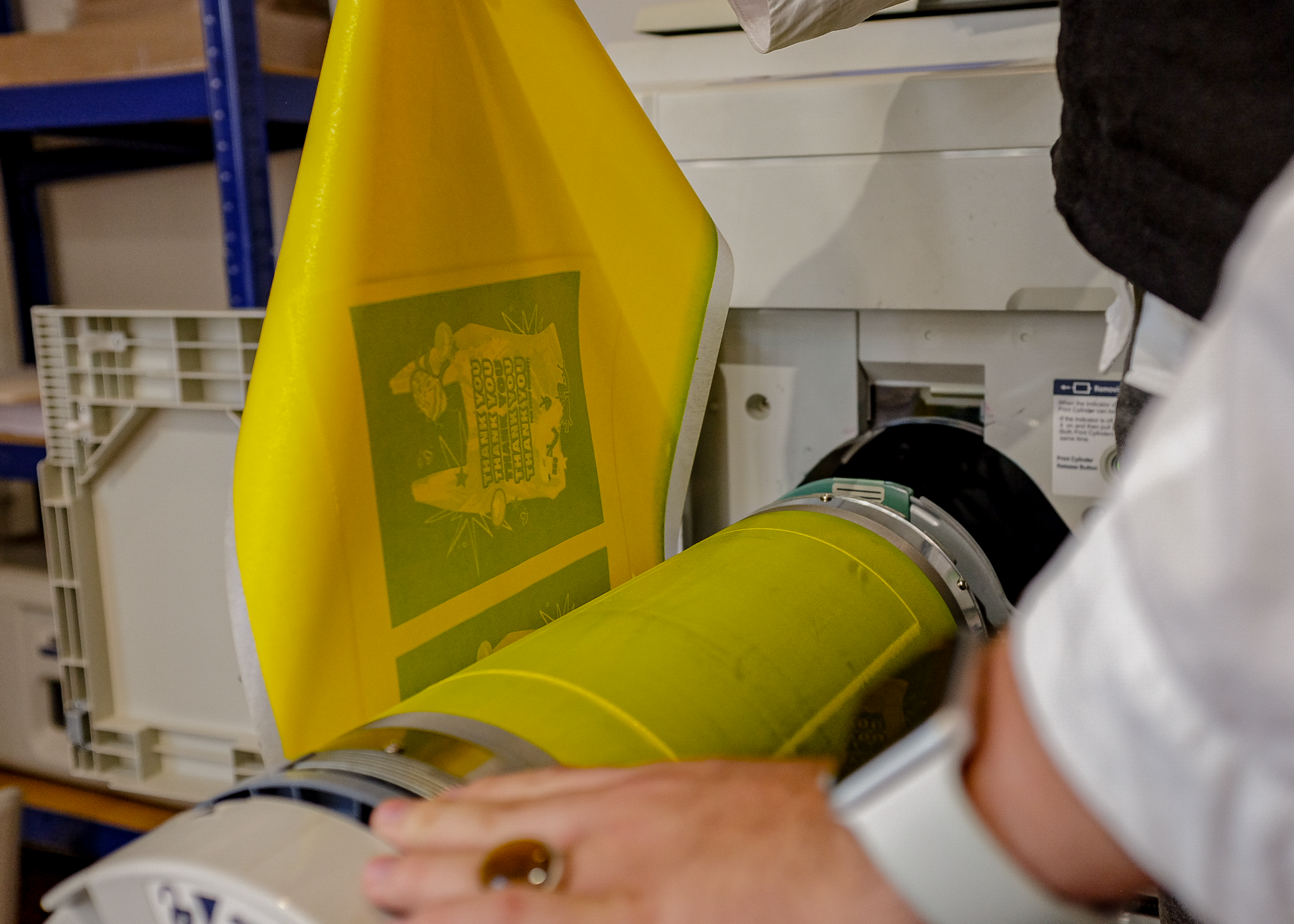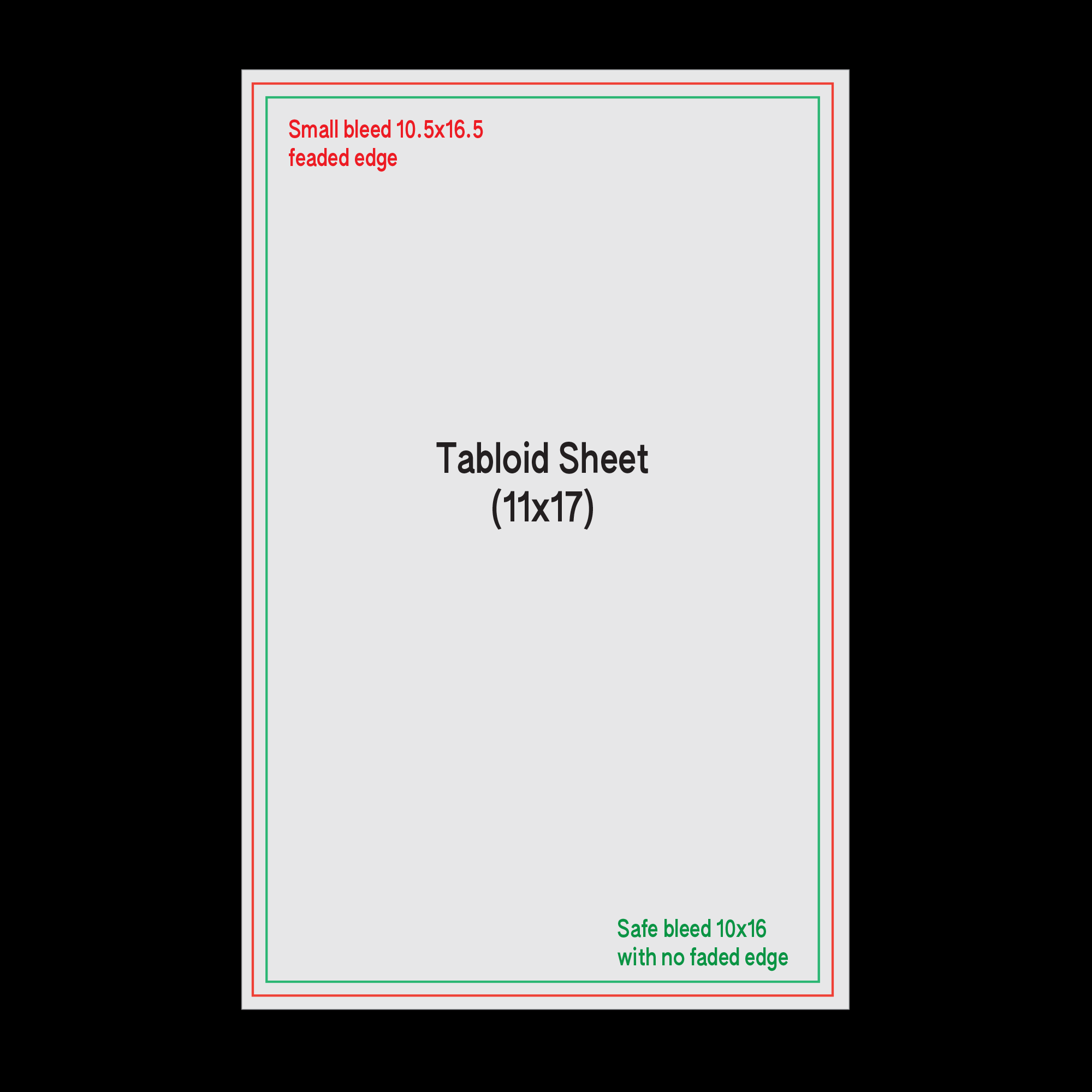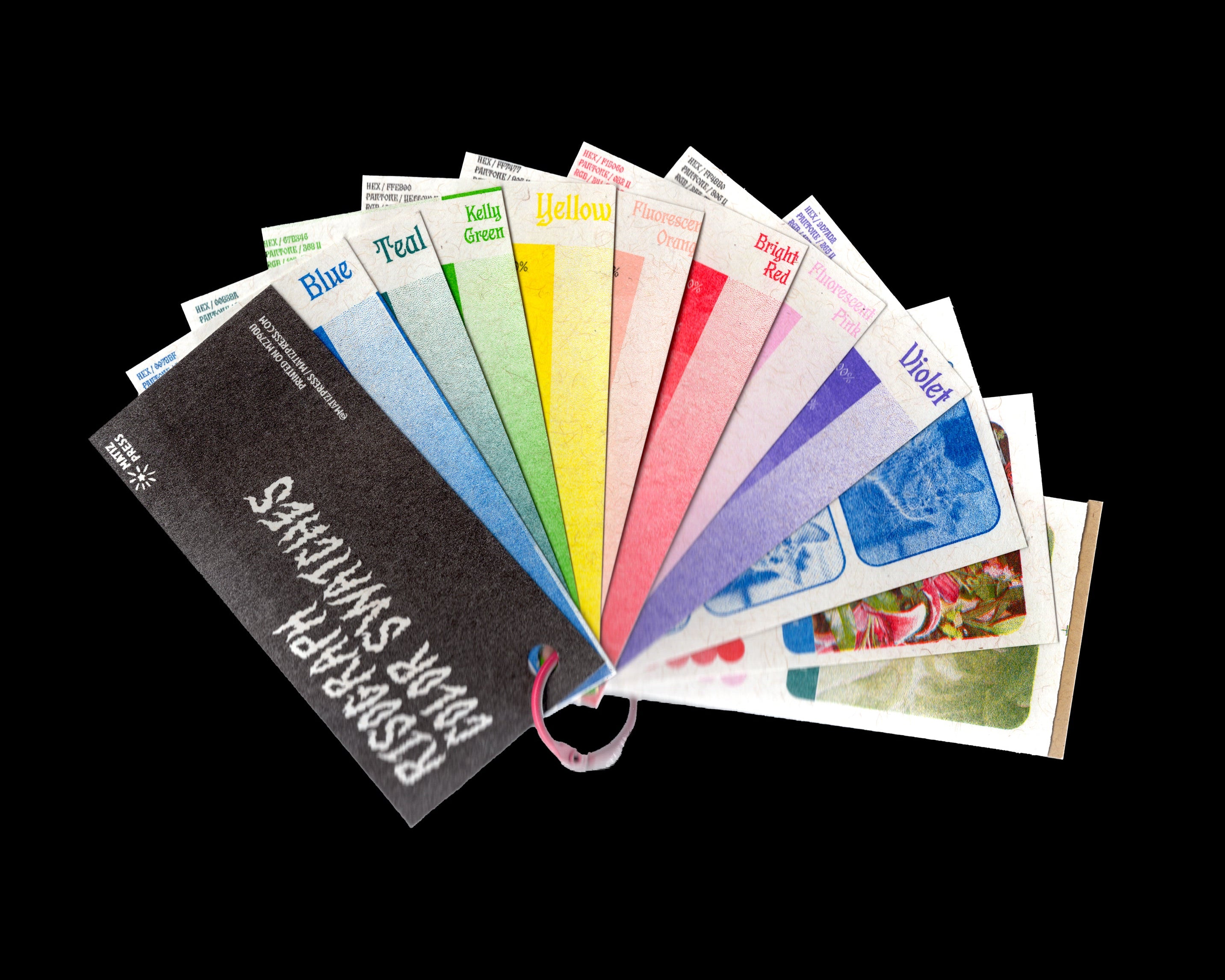Welcome to Riso at Matiz, your destination for vibrant, eco-friendly, and unique Risograph printing. Our studio empowers you to create stunning prints with bold colors, distinctive textures, and an artistic flair.


What is Riso?
Risograph (Riso) printing is a stencil-based duplicator process that offers the efficiency of digital printing with the charm and tactile quality of traditional screen printing. Developed in Japan in the 1980s, the Risograph has become a favorite among artists and designers for its vibrant colors, eco-friendly practices, and distinctive aesthetic.
How it Works
- Creating a Master: A digital or scanned image is used to create a rice-paper stencil (master).
- Printing: The master is wrapped around an ink drum. As the drum rotates at high speed, ink is pushed through the stencil onto paper.
- Layering Colors: Multicolored prints are achieved by running the paper through the machine multiple times, with each color layer printed separately.
At Matiz Press, we use:
- MZ790U Dual-Color Printer: Prints two colors in a single pass.
Paper Guidelines
Recommended Paper Types
- Weight: 13 lb bond to 110 lb index (46 to 210 GSM)
- Finish: Uncoated paper (smooth or vellum recommended)
Riso cannot print on glossy or coated paper. For specialty stock, we recommend French Paper Co., Mohawk, or Cougar.
Printing Area
- Maximum Size: 11 x 17 inches (Tabloid)
- Minimum Size: 3.5 x 5.5 inches
- Printable Area: Approximately 10.75 x 16.75 inches
Note: Riso cannot print full bleed. Add a 1/4–1/2 inch border for optimal results.

Preparing Your File
File Setup
- Separate Colors: Save each color layer as a grayscale file. The Riso reads the percentage of black to determine ink coverage (e.g., 100% black = 100% ink).
- Format: Submit files as PDF, PNG, or JPEG at 300–600 DPI.
- Font Size: Minimum 6pt for legibility.
- Line Weight: Minimum 0.5pt for clarity.
- Solid Areas: Avoid large areas of 100% ink; reduce to 50%–80% opacity for smoother printing.
- Reference File: Include a full-color reference image to guide the final output.
For assistance, you can book a consultation.
<Graphic by Secret Riso Club
Materials Pricing
At Matiz Press, we provide affordable materials to support your printing projects. You’re welcome to bring your own materials or purchase from our in-house stock.
Please Note: When renting the printer, all materials used during your session—including paper, ink passes, and masters—will be calculated and charged based on actual usage.
Paper
All paper is at 11"x17", printed, then cut down for smaller sized projects.
- Tabloid Text Weight (11 x 17"): $0.30/sheet
- Tabloid Cover Stock (11 x 17"): $0.60/sheet
- Specialty Papers: Prices vary; inquire about availability
Masters & Inks
- Risograph Masters: $4 per master
- Ink Passes: $0.05 per pass
Additional Materials
- Binding Supplies: $0.15 per booklet (includes staples, coils, or thread)
- Button Supplies: 1.5" Buttons: $15 for 20 / 2" Star Buttons: $25 for 20
Important Notes
- Usage-Based Fees: Materials used during your session will be measured and charged accordingly.
- Special Orders: For custom materials or large projects, contact us for a personalized quote.
- Limited Stock: Some materials may have limited availability, so check ahead of your session.


Our Riso Colors
At Matiz Press, we have 10 color options (more soon, we hope!). These include Blue, Teal, Kelly Green, Yellow, Sunflower, Fluorescent Orange, Bright Red, Fluorescent Pink, Violet, and Black.
You can find more info here: stencil.wiki/colors
Risograph Ink Colors
Each color requires a dedicated drum. Below are the colors currently available at Matiz Press.
Black
ブラック
HEX: #000000
Pantone: Black U
CMYK: 0, 0, 0, 100
RGB: 0, 0, 0
Violet
ヴァイオレット
HEX: #9D7AD2
Pantone: 265 U
CMYK: 40, 51, 0, 0
RGB: 157, 122, 210
Blue
ブルー
HEX: #0078BF
Pantone: 3005 U
CMYK: 99, 22, 0, 1
RGB: 0, 120, 191
Teal
ティールグリーソ
HEX: #00838A
Pantone: 320 U
CMYK: 100, 1, 40, 7
RGB: 0, 131, 138
Kelly Green
ケリーグリーン
HEX: #67B346
Pantone: 368 U
CMYK: 52, 0, 86, 0
RGB: 103, 179, 70
Yellow
イエロー
HEX: #FFE800
Pantone: Yellow U
CMYK: 0, 9, 100, 0
RGB: 255, 232, 0
Sunflower
HEX: #FFB511
PANTONE: 116 U
RGB: 255, 181, 17
CMYK: 0, 29, 93, 0
Fluorescent Orange
蛍光オレンジ
HEX: #FF7477
PANTONE: 805 U
RGB: 255, 116, 119
CMYK: 0, 55, 53, 0
Bright Red
ブライトレッド
HEX: #F15060
Pantone: 032 U
CMYK: 0, 67, 60, 5
RGB: 241, 80, 96
Fluorescent Pink
蛍光ピンク
HEX: #FF48B0
Pantone: 806 U
CMYK: 0, 72, 31, 0
RGB: 255, 72, 176
Riso Imperfections
Smudging: Riso ink, composed of rice bran oil, water, and pigment, is prone to smudging, similar to newspaper ink. Large areas of solid color, particularly dark tones, can increase the likelihood of smudging, especially on hight-touch areas. To reduce smudging, allow prints to dry thoroughly before handling.
Roller Marks: Roller marks may appear when papers with significant ink coverage pass through the Riso multiple times. These marks are caused by the feeder rollers coming into contact with wet ink. To address this:
- Print layers with heavy ink coverage last.
- If possible, leave areas in the center of design lighter in shade.
- Allow sufficient drying time between layers.
- Marks on white areas can often be removed gently with an eraser.
Registration: As with screen printing, each color layer in Riso printing is applied individually. For prints with multiple layers, slight misalignments (registration issues) between colors may occur. This variability can add character to your prints, but techniques like color trapping can help reduce visible gaps where layers meet.
Bleed: The printable area of a risograph is limited by the size of the paper, so a small border is left on the image to allow the paper to pass through.
If prints are needed at full bleed, print the design slightly larger and trim to desired size.